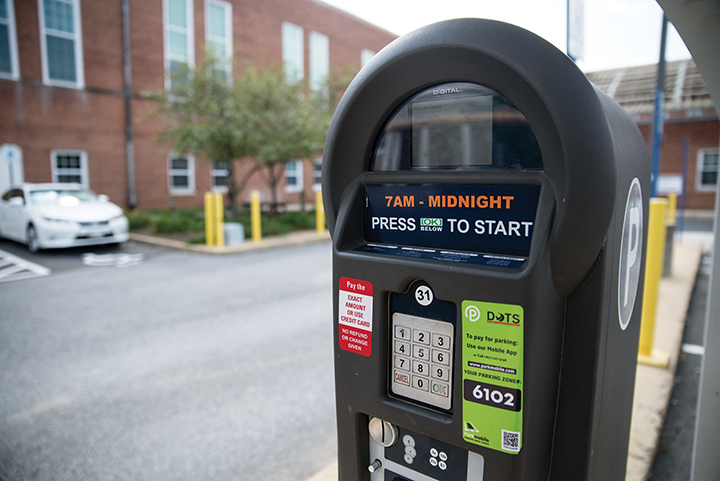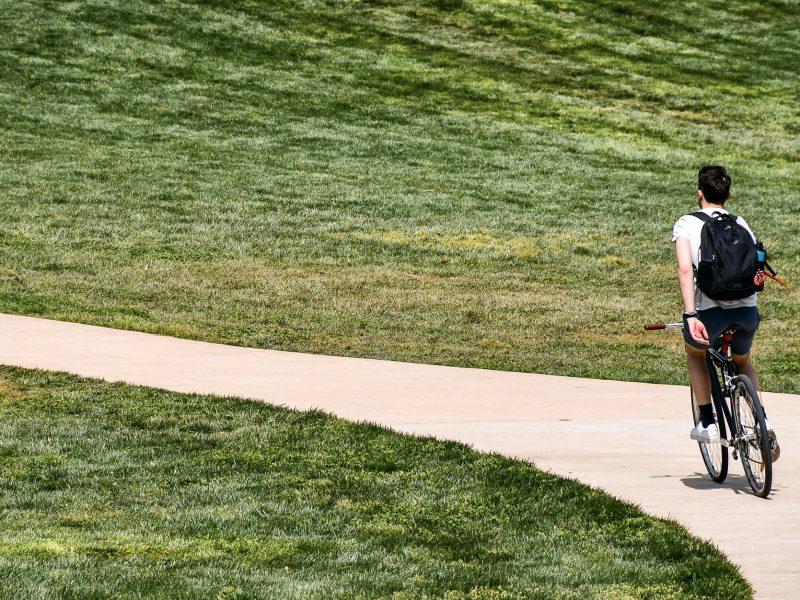As construction restricts the number of University of Maryland’s parking spaces, DOTS has been grappling with ways to ensure students and faculty can find parking.
Regents Drive Garage will be closed from June 6 through Aug. 19 for regular maintenance, said Anna McLaughlin, Department of Transportation Services spokeswoman.
“We’re at [about] 1,200 slots for [Regents Drive] Garage,” she said. “So, those employees [who park there] are going to have to park out by Xfinity [Center], and we’re going to create some additional visitor parking there.”
McLaughlin said DOTS doesn’t yet have a full plan, but it will make some sections of the Xfinity lot available for all parkers.
[Read more: University of Maryland will decrease parking spaces and increase fees by fall 2018]
The limited parking in Regents Drive Garage is temporary, but more parking spaces will be eliminated in the coming year. By the end of 2018, campus construction will account for the elimination of about 3,000 parking spaces since fall 2015, according to DOTS data.
“There are really only two ways that you can fix parking problems,” said David Allen, DOTS executive director. “One is to reduce the number of parkers, and the other one, at some point, is to add spaces.”
By fall 2018, students living at the University View and The Varsity apartment complexes may not be allowed to park on the campus, which would free 450 spaces, he added. Currently, students who can’t park at the apartments can purchase a permit to park on the campus.
Kendra Dickerson, assistant general manager at The Varsity, said the apartment maintains 147 spots for 901 renters.
“As of right now, we’re just open to seeing what DOTS’ final decision is,” she said.
The View provides about 400 parking spots for about 1500 residents, said Katherine Foote, a marketing associate at the View.
“When students are residents with us, we do our very best to accommodate them with parking,” Foote said. “[But] it is a first-come, first-served basis.”
The View previously rented a commercial lot adjacent to its building that almost doubled the size of its parking spaces, Foote said.
[Read more: UMD students might be able to park their cars in an off-campus lot starting next year]
“If [DOTS’ plan] was to hit, they would [possibly] look into doing that again,” she said.
DOTS maintains a buffer for parking spots to accommodate special events, such as football games, that require excess parking. In 2015, that buffer was about 1,500 spaces. This coming fall, that buffer will be about 700, Allen said.
“We’re reducing the buffer just so everything still works [and] we don’t have to have these ‘hunting licenses,'” Allen said. “We have actually not experienced a 700-space buffer before. At least in decades. So, it’s going to be tight.”
Allen said that DOTS will not mimic other universities that use “hunting licenses,” which allow universities to operate under the assumption that not all parking spaces will be full at once, so they sell as many parking passes as possible, forcing students to hunt for spots.
For faculty, staff and resident students, DOTS sells parking registrations at a 1-1 ratio to the number of spaces available because those vehicles are generally parked on the campus all the time, McLaughlin said. For commuter parking lots, it sells 1.25 to 1.7 registrations for every space available, depending on the lot.
“We assign based on the number of spaces, and we oversell [for commuter lots] because not everyone is there at the same time, but history tells us that we can oversell by a particular [ratio],” Allen said.
“We keep those [ratios such that] the opportunity to find a space in an employee lot or student lot will be the same today as it is tomorrow,” he added. “And how you do that is … reduce the number of parkers.”
To help address the limited parking, DOTS will not sell parking permits to freshmen living on the campus for the fall 2017 semester. That will free about 500 spaces, Allen said.
Allen said DOTS may begin a campaign to reduce the use of single-occupancy cars for campus commuters by encouraging the use of mass transit and carpooling. DOTS may also consider shortening headways on bus routes, meaning more frequent service and more ridership.
“I think that might be where we start,” Allen said. “[But] there’s a chance that we may be hiring a transportation consultant to see how best to use existing resources.”



